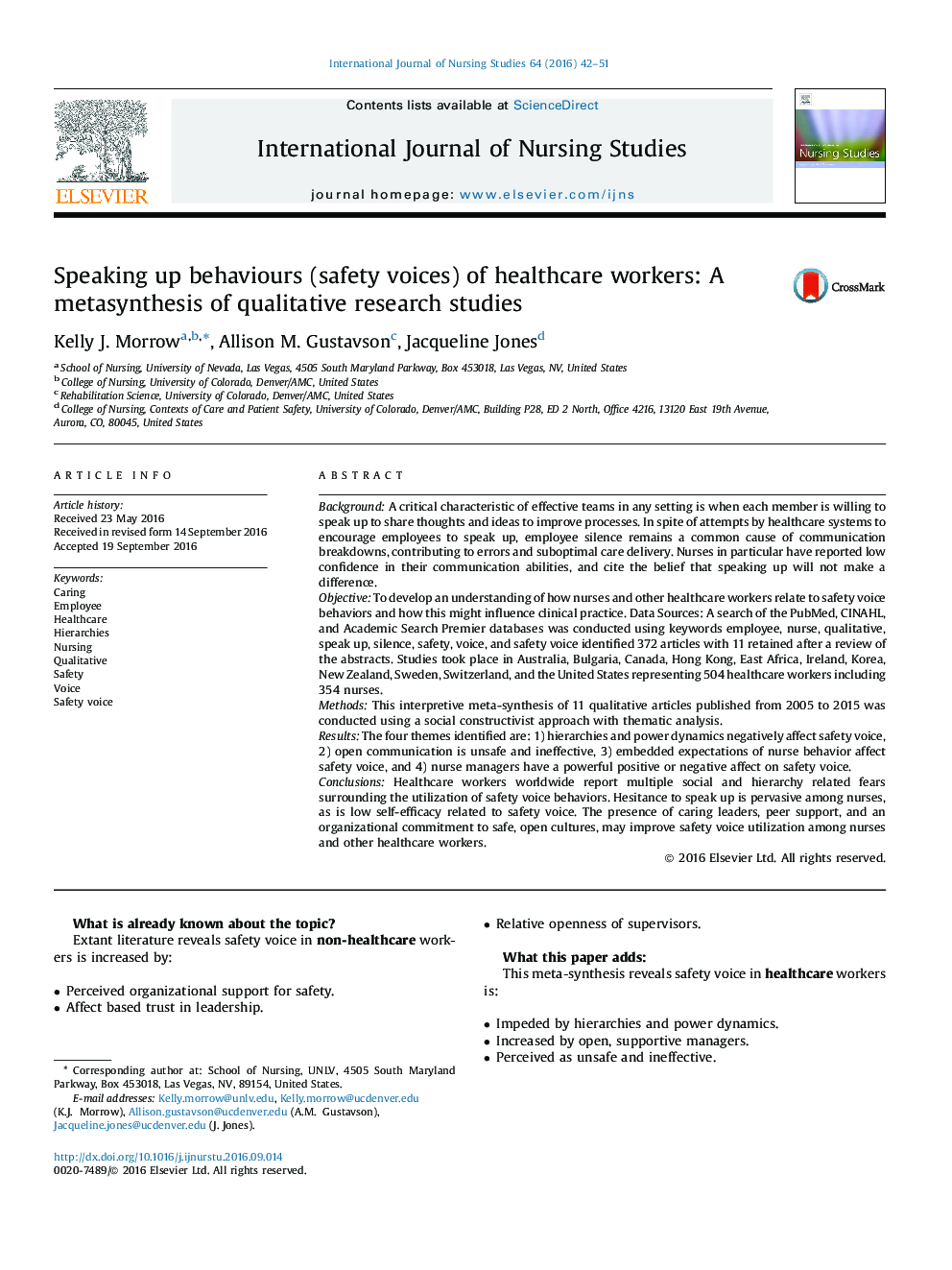| Article ID | Journal | Published Year | Pages | File Type |
|---|---|---|---|---|
| 5121040 | International Journal of Nursing Studies | 2016 | 10 Pages |
BackgroundA critical characteristic of effective teams in any setting is when each member is willing to speak up to share thoughts and ideas to improve processes. In spite of attempts by healthcare systems to encourage employees to speak up, employee silence remains a common cause of communication breakdowns, contributing to errors and suboptimal care delivery. Nurses in particular have reported low confidence in their communication abilities, and cite the belief that speaking up will not make a difference.ObjectiveTo develop an understanding of how nurses and other healthcare workers relate to safety voice behaviors and how this might influence clinical practice. Data Sources: A search of the PubMed, CINAHL, and Academic Search Premier databases was conducted using keywords employee, nurse, qualitative, speak up, silence, safety, voice, and safety voice identified 372 articles with 11 retained after a review of the abstracts. Studies took place in Australia, Bulgaria, Canada, Hong Kong, East Africa, Ireland, Korea, New Zealand, Sweden, Switzerland, and the United States representing 504 healthcare workers including 354 nurses.MethodsThis interpretive meta-synthesis of 11 qualitative articles published from 2005 to 2015 was conducted using a social constructivist approach with thematic analysis.ResultsThe four themes identified are: 1) hierarchies and power dynamics negatively affect safety voice, 2) open communication is unsafe and ineffective, 3) embedded expectations of nurse behavior affect safety voice, and 4) nurse managers have a powerful positive or negative affect on safety voice.ConclusionsHealthcare workers worldwide report multiple social and hierarchy related fears surrounding the utilization of safety voice behaviors. Hesitance to speak up is pervasive among nurses, as is low self-efficacy related to safety voice. The presence of caring leaders, peer support, and an organizational commitment to safe, open cultures, may improve safety voice utilization among nurses and other healthcare workers.
